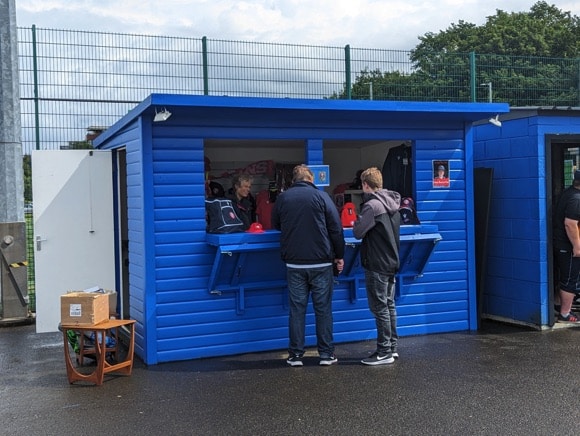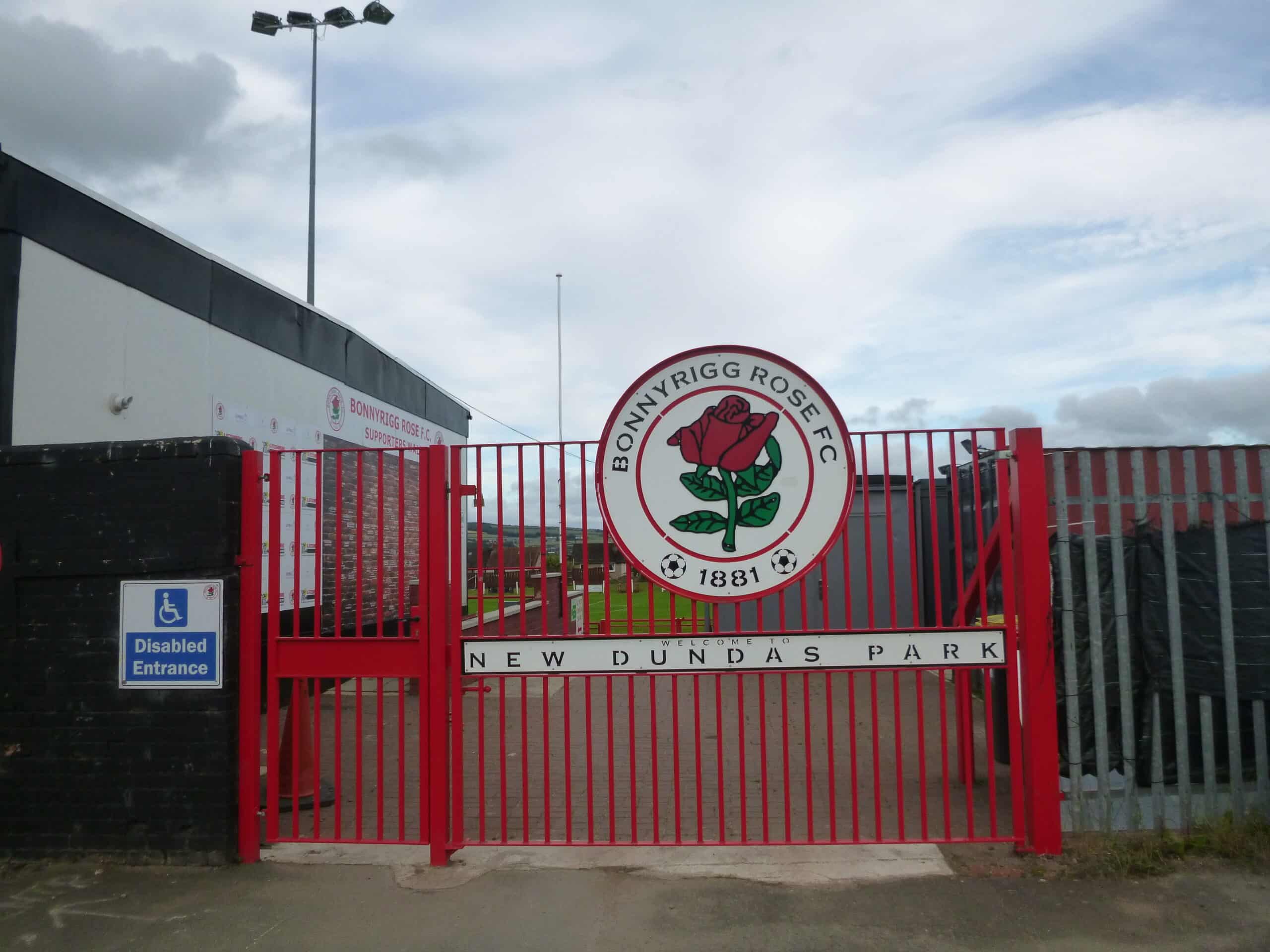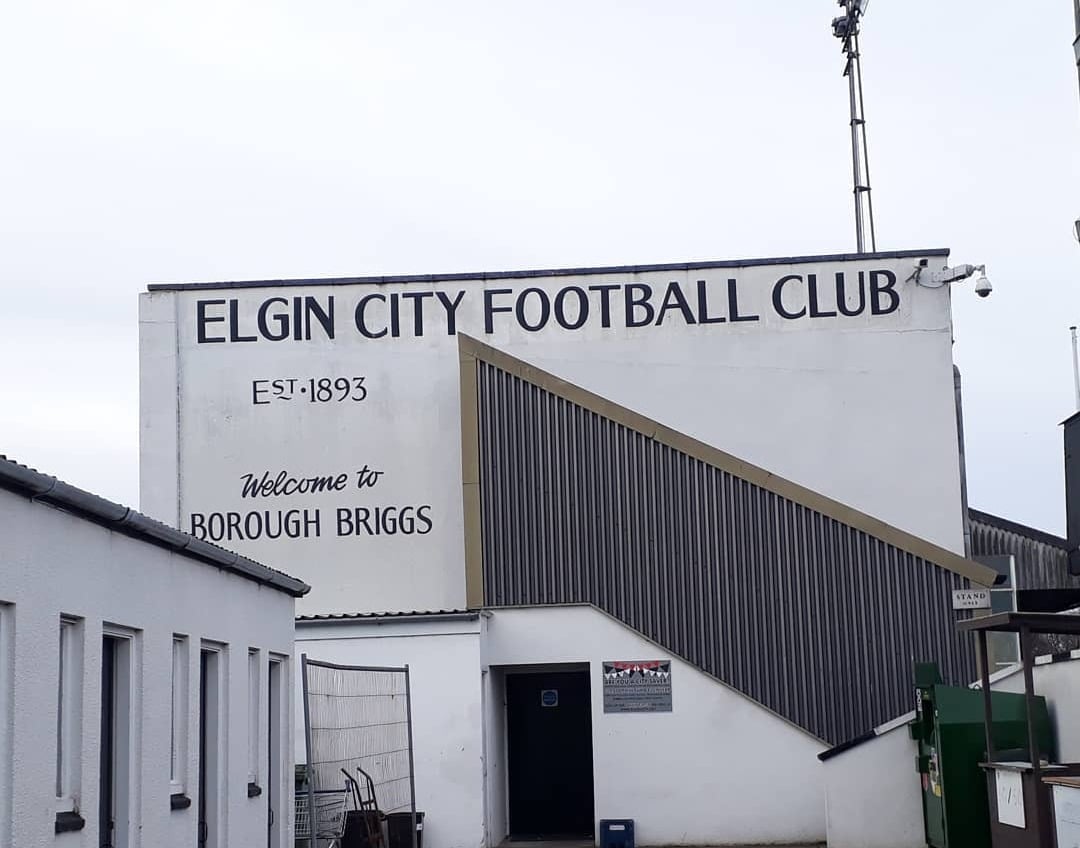A fan’s guide – the club from early doors to today
Edinburgh’s fourth club in the Scottish Professional Football League, The Spartans offer ample evidence of the wisdom of linking the SPFL pyramid with the Highland and Lowland Leagues in 2015.
Introduced south of the border in 1987, promotion from non-league to league level has had huge benefits in Scotland, too, not least the arrival of The Spartans in 2023, following a trail blazed by Edinburgh City, Cove Rangers, Kelty Hearts and Bonnyrigg Rose.
Putting together two strings of wins and unbeaten runs, the three-time Lowland League champions gave a good account of themselves in the first half of their debut season in League Two. Former Edinburgh City striker Blair Henderson, the highest goalscorer in League Two history, added to his overall total for The Spartans, as midfield youngsters Rhys Armstrong and Samuel Newman gained valuable experience.

All bodes well for the future at Ainslie Park, the former Edinburgh City ground tucked inland from Leith.
It was two former Edinburgh University players, Elliot Wardlaw and Jimmy Beaumont, who formed The Spartans for ex-alumni in 1951. The club soon joined the East of Scotland League, at the time one of three main non-league divisions alongside the Highland League and South of Scotland League.
Dominated at the time by Hearts and Hibs reserves, it was a decent level of football, illustrated by occasional upsets in the Scottish Cup such as The Spartans’ 3-2 win at East Stirlingshire in 1978.
By then, the Edinburgh side had already won the East of Scotland League, in 1972, a feat they repeated in 1984. Later that decade, the league split into Premier and First Divisions. Opening the club to all-comers, The Spartans began to lift the title with more regularity, alongside Whitehill Welfare and Annan Athletic.

It was Annan who led the way as leading non-league clubs clamoured to join the SFL, as it was then known as, having their application accepted in 2008, the year Gretna dropped out. The Spartans had also applied without success, despite a bid boosted by recent Scottish Cup wins over Alloa, Arbroath, Berwick Rangers and Queen’s Park.
By now the club was playing at City Park, adjacent to today’s Ainslie Park, where 3,200 gathered for the visit of Livingston in 2004 and 3,346 for St Mirren in 2006, both Fourth Round ties.
While the 0-0 draw with the Paisley side, then top of the second tier, remains the greatest result in Spartans’ history, it was so nearly 1-0 – a Jonathan Seeley shot from ten yards missed the target when scoring would have been easier. The final whistle blew shortly afterwards, and St Mirren showed no mercy in the replay at Love Street on Valentine’s Day.

City Park had been the home ground of Edinburgh City in the 1930s, and was later used by Ferranti Thistle and Hibernian reserves. Though modest, it was revered, and a protest group was formed to save it from development after The Spartans moved out in 2009. It was all in vain, but at least their last game here, a derby against Edinburgh City, proved an appropriate send-off.
Opened in 2008, with an all-seater stand, floodlights and better facilities for players and officials, purpose-built Ainslie Park was more suited to the club’s ambitions to achieve league status.
The Spartans became the dominant side at this then highest level of non-league football in their region, winning the league and all four cup trophies in 2010-11, meaning they had been crowned East of Scotland champions three years on the bounce.

The Spartans were therefore perfectly placed when the Lowland League was created in 2013-14 – in fact, they were one of three teams granted automatic entry to this new de facto fifth division, which created the first pyramid in Scottish football, introducing promotion and relegation with League Two, by means of a play-off.
At the same level as the Lowland League was the Highland League, traditionally the strongest of the non-league divisions. As luck would have it, so far it has been mainly Lowland League teams who have made the leap to the SPFL.
Also as luck would have it, the first Lowland League champions in 2014 were The Spartans – but it was decided that promotion/relegation would begin the following season with two play-offs, first with the winners’ counterparts in the Highland League.

On the plus side, all Lowland League teams could join the Scottish Cup at the First Round stage, The Spartans, as champions, granted passage to Round Two. Needing a replay to beat league rivals East Kilbride, The Spartans duly put Clyde to the sword, then Greenock Morton, before attracting 2,500 to Ainslie Park for the Fifth Round tie with Berwick.
In a game bookended by an early strike for the visitors and a stoppage-time equaliser for the hosts, ironically it was later Spartans goalgetter Blair Henderson, prolific when at Berwick, who came closest to edging the tie for the League Two side.
On a freezing night in February, 1,000 Spartans fans headed south over the border for the replay at Shielfield Park. Again, this time with a dream quarter-final at Hibs beckoning, supporters headed home full of what ifs? after Jack Nixon hit the Berwick woodwork with the score at 1-0 and only three minutes left on the clock.
Two seasons later, Edinburgh City became the first Lowland League club to win both play-offs and reach League Two, setting a precedent that several others would follow.

Lowland League champions in 2018, The Spartans got their first shot at the play-offs that spring, but were brushed aside by Highland League champions Cove Rangers.
The arrival of Henderson from Edinburgh City for the 2021-22 season pushed The Spartans back into contention. Winning the Lowland League title again the following year, The Spartans had Blair Carswell to thank for two outstanding penalty saves at the end of the shoot-out at Brechin that sent the Edinburgh side to the play-off final.
Facing Albion Rovers, a Scottish League side since 1920, The Spartans kept their nerve to draw the first leg 1-1 at Ainslie Park. In Coatbridge, the hosts failed to bounce back from an early Henderson penalty, going a man down towards the end. The Spartans held on to score a famous victory, and increase the number of Edinburgh clubs in the SPFL to four.
Keeping pretty much the same squad, The Spartans started their historic 2023-24 with a 1-0 win over Dundee United in the League Cup. More than holding their own in the league, The Spartans overcame Championship side Arbroath in the Scottish Cup to earn a plum tie at home to Hearts in the Fourth Round.







ground Guide
The field of dreams – and the story behind it







Ainslie Park comprises one main stand of around 300 seats. While there is no segregation of home and away fans, visiting supporters are encouraged to use the north end, of 90 seats.
Opposite, the Newtown & Roofing Stand is allocated to families – it runs from the penalty box to the centre-circle, only covering around a third of the pitch.
Spectators also stand around the grass verges in areas without seating or behind the goals. Capacity is 3,600, including 534 seats.
The ground is floodlit, and equipped with a modest drinks outlet and hut for match-day merchandise. The pitch is artificial.
getting here
Going to the ground – tips and timings


The most convenient bus for Pilton Drive, nearest stop to Ainslie Park, is the 27 run by Lothian, which leaves from Hanover Street (stop GP) and Thistle Street (stop GQ) in the city centre, a short walk from the Scott Monument and Waverley station. More services set off from Thistle Street, about 10mins from Ferry Road, the main artery leading to Ainslie Park. On Sundays, the frequency is every 30mins.
Alternatively, if you’re in Leith, bus 21 is also frequent from the Kirkgate Centre, taking 15-20mins to reach this end of Ferry Road. On Sundays, it’s every 30-40mins.
The stop before Pilton Drive, West Winnelstrae, is also convenient. Walk up Pilton Drive, past Morrisons, and the entrance to the ground is on your left, about five minutes from the junction with Ferry Road.
You can also come via Crewe Toll, the stop where Ferry Road meets the roundabout, using the 19, 22 or 37 from Queensferry Street (stop QD, 10min journey time), reasonably close to Haymarket station.
The sat nav code for Ainslie Park (94 Pilton Drive) is EH5 2HF. There is very limited parking at the ground – alternatives are Morrisons supermarket at 102 Pilton Drive (EH5 2XS) and the Ainslie Park Leisure Centre at 92 Pilton Drive (EH5 2HF).
getting in
Buying tickets – when, where, how and how much

Advance tickets are sold online through Fanbase – simply select ‘Spartans’ from the long list. You don’t need to register to use the service.
From 1hr before kick-off, four turnstiles operate on Pilton Drive, two taking cash, two taking cards.
There’s a simple pricing policy of £15, discounted £10, 12-16s £5, under-12s free. Women are charged £8, discounted £5, under-16s free.
what to buy
Shirts, kits, merchandise and gifts

A match-day merchandise outlet sets up by the turnstiles in the run-up to kick-off. The home shirt is white, with a red collar and shoulders, away is blue, with a white collar and shoulders. Both kits feature a fade effect down the sleeves.
Accessories include ski hats, bobble hats, snoods (remember those?) and bottle openers. The match programme (£3) will also be available.
Where to Drink
Pre-match beers for fans and casual visitors


The area around Ainslie Park is bereft of pubs and bars. The only real option is the Pub & Grill at the Village Hotel Club, with its own fanzone lined with large screens for sport. It’s right by Crewe Toll bus stop, just the other side of Ferry Road from Morrisons and the ground.
A modest match-day outlet sets up beneath a first-floor terrace bar for members and officials – look out for the Cafe sign as you enter.

















































